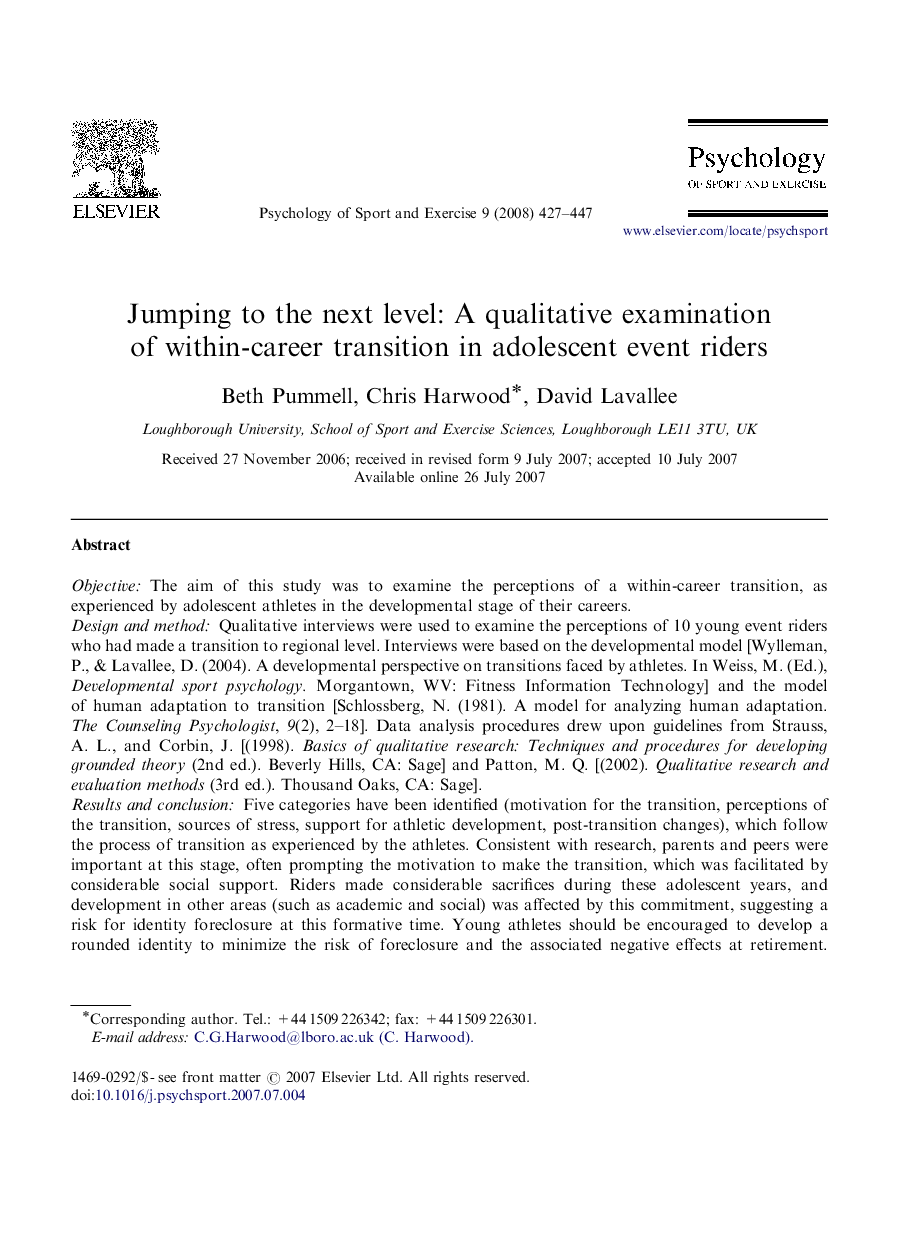| Article ID | Journal | Published Year | Pages | File Type |
|---|---|---|---|---|
| 894974 | Psychology of Sport and Exercise | 2008 | 21 Pages |
ObjectiveThe aim of this study was to examine the perceptions of a within-career transition, as experienced by adolescent athletes in the developmental stage of their careers.Design and methodQualitative interviews were used to examine the perceptions of 10 young event riders who had made a transition to regional level. Interviews were based on the developmental model [Wylleman, P., & Lavallee, D. (2004). A developmental perspective on transitions faced by athletes. In Weiss, M. (Ed.), Developmental sport psychology. Morgantown, WV: Fitness Information Technology] and the model of human adaptation to transition [Schlossberg, N. (1981). A model for analyzing human adaptation. The Counseling Psychologist, 9(2), 2–18]. Data analysis procedures drew upon guidelines from Strauss, A. L., and Corbin, J. [(1998). Basics of qualitative research: Techniques and procedures for developing grounded theory (2nd ed.). Beverly Hills, CA: Sage] and Patton, M. Q. [(2002). Qualitative research and evaluation methods (3rd ed.). Thousand Oaks, CA: Sage].Results and conclusionFive categories have been identified (motivation for the transition, perceptions of the transition, sources of stress, support for athletic development, post-transition changes), which follow the process of transition as experienced by the athletes. Consistent with research, parents and peers were important at this stage, often prompting the motivation to make the transition, which was facilitated by considerable social support. Riders made considerable sacrifices during these adolescent years, and development in other areas (such as academic and social) was affected by this commitment, suggesting a risk for identity foreclosure at this formative time. Young athletes should be encouraged to develop a rounded identity to minimize the risk of foreclosure and the associated negative effects at retirement. Further within-career transition research is needed in order that programs can be designed which facilitate athlete development, mitigate negative influences, and minimize talent loss.
